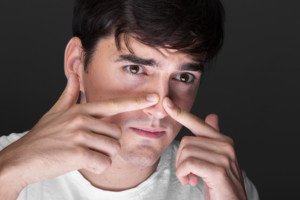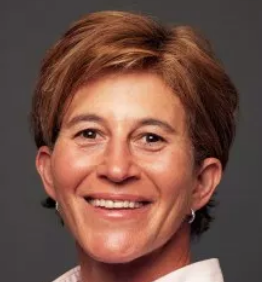
Your suspicion is correct:
A hard lump inside your nose can be cancer — and there are numerous different kinds of cancers that can cause a self-detected lump or bump inside the nose.
However, if you’ve found a lump inside your nose, whether hard or soft, and especially if you don’t have any other symptoms, odds are way in your favor that the cause is benign.
“A hard lump inside the nose is most likely a variation of normal nasal anatomy,” says Dr. Stacey Silvers, MD, of Madison ENT & Facial Plastic Surgery in NYC, who is board certified in otolaryngology; one of her specialties is sinus surgery.
“If the septum is deviated in the front of the nose, it is palpable and feels hard.
“As septal cartilage can change shape over time the physical findings can feel like a new change.
“Nasal lesions like papilloma [benign growth] can be palpated [felt by the patient or doctor], especially if in the front.
“New lesions, concerns or changes should be examined by an ENT to confirm the diagnosis.”
Other Non Cancer Causes of Lumps Inside Nose
(no particular order)
• Polyp
• Concentration of very tiny blood vessels
• Pimple or acne
• Bug bite
• Irritated, inflamed or damaged pore (folliculitis; can be caused by infection or nose picking)
• Furuncle (caused by bacterial infection)
Infections inside the nose can be accompanied by nasal pain, headache, fever and feeling ill.
Though furuncle infection is not a cancer, it can become very serious if not treated in time.
Thus, a bump or lump inside your nose should be examined by a doctor.
Lumps in Nose Caused by Cancer Include:
• Squamous cell carcinoma. Comprises over 60 percent of nasal and paranasal malignancies.
• Adenocarcinoma
• Adenoid cystic carcinoma
• Plasmacytoma
• Melanoma, basal cell carcinoma
• Olfactory neuroblastoma
Do not panic just because there are seven types of cancer listed. Quantity of type does NOT correlate to incidence!
Incidence
Cancerous tumors inside the nose are rare, to the tune of approximately 2,000 diagnoses every year in the U.S. (cancer.org).
Most patients are men, and 80 percent of all patients are over age 55.

 An NYC expert in ear, nose and throat care,
An NYC expert in ear, nose and throat care, 







































